Memorials
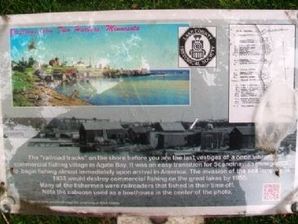
The "railroad tracks" on the shore before you are the last vestiges of a once vibrant commercial fishing village in Agate Bay. It was an easy transition for Scandinavian immigrants to begin fishing almost immediately upon arrival in America. The invasion of the sea lamprey in 1935 would destroy commercial fishing on the great lakes by 1955. Many of the fishermen were railroaders that fished in their time off. Note the caboose used as a boathouse in the center of the photo.
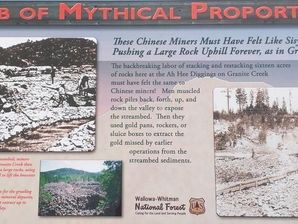
Center Panel:
These Chinese Miners Must Have Felt Like Sysyphus Pushing a Large Rock Uphill Forever, as in Greek Mythology.
The backbreaking labor of stacking and re-stacking sixteen acres of rocks here at the Ah Hee Diggings on Granite Creek must have felt the same to Chinese miners! Men muscled rock piles back, forth, up, and down the valley to expose the streambed. Then they used gold pans, rockers or sluice boxes to extract the gold missed by earlier operations from the streambed sediments... Read More
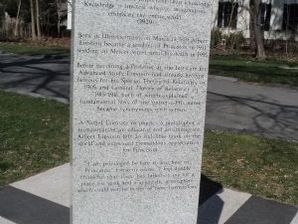
E = mc² (1905) Imagination is more important than knowledge. Knowledge is limited, whereas imagination embraces the entire world. (1929) Born in Ulm Germany on March 14, 1879, Albert Einstein became a resident of Princeton in 1933, residing on Mercer Street until his death in 1955. Before becoming a Professor at the Institute for Advanced Study, Einstein had already become famous for his Special Theory of Relativity in 1905 and General Theory of Relativity in 1915-1916, both of which... Read More
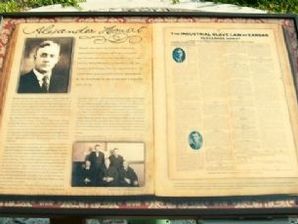
Among the many significant European immigrants in Kansas history is Alexander Howat, President of District 14 of the United Mine Workers of America. He was chiefly responsible for the organization of a powerful and militant union membership in the territory of the Cherokee-Crawford coal fields.
Alexander McWhirter Howat was born in Glasgow, Scotland, on September 10, 1876. At the age of three he emigrated with his parents to Troy, New York, moving from there to Braidwood, Illinois. Howat... Read More
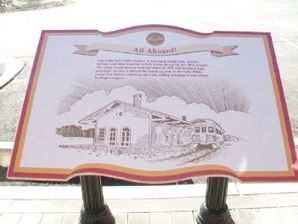
This is the Fort Gratiot Station. It welcomed immigrants, settlers, military and other travelers to Port Huron during the late 19th century. The Grand Trunk Railway built this depot in 1858 and launched daily passenger service to Detroit the following year. In the early 1860s, young Tom Edison worked on the train, selling newspapers and snacks to the passengers.
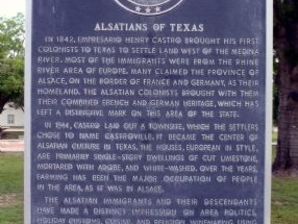
In 1842, Empresario Henry Castro brought his first colonists to Texas to settle land west of the Medina River. Most of the immigrants were from the Rhine River area of Europe. Many claimed the province of Alsace, on the border of France and Germany, as their homeland. The Alsatian colonists brought with them their combined French and German heritage, which has left a distinctive mark on this area of the state.
In 1844, Castro laid out a townsite, which the settlers chose to name Castroville.... Read More
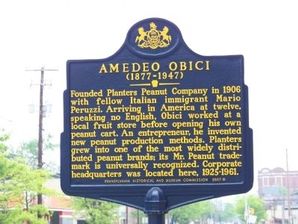
Founded Planters Peanut Company in 1906 with fellow Italian immigrant Mario Peruzzi. Arriving in America at twelve, speaking no English, Obici worked at a local fruit store before opening his own peanut cart. An entrepreneur, he invented new peanut production methods. Planters grew into one of the most widely distributed peanut brands; its Mr. Peanut trademark is universally recognized. Corporate headquarters was located here, 1925-1961.
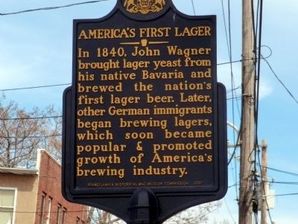
In 1840, John Wagner brought lager yeast from his native Bavaria and brewed the nation's first lager beer. Later, other German immigrants began brewing lagers, which soon became popular & promoted growth of America's brewing industry
